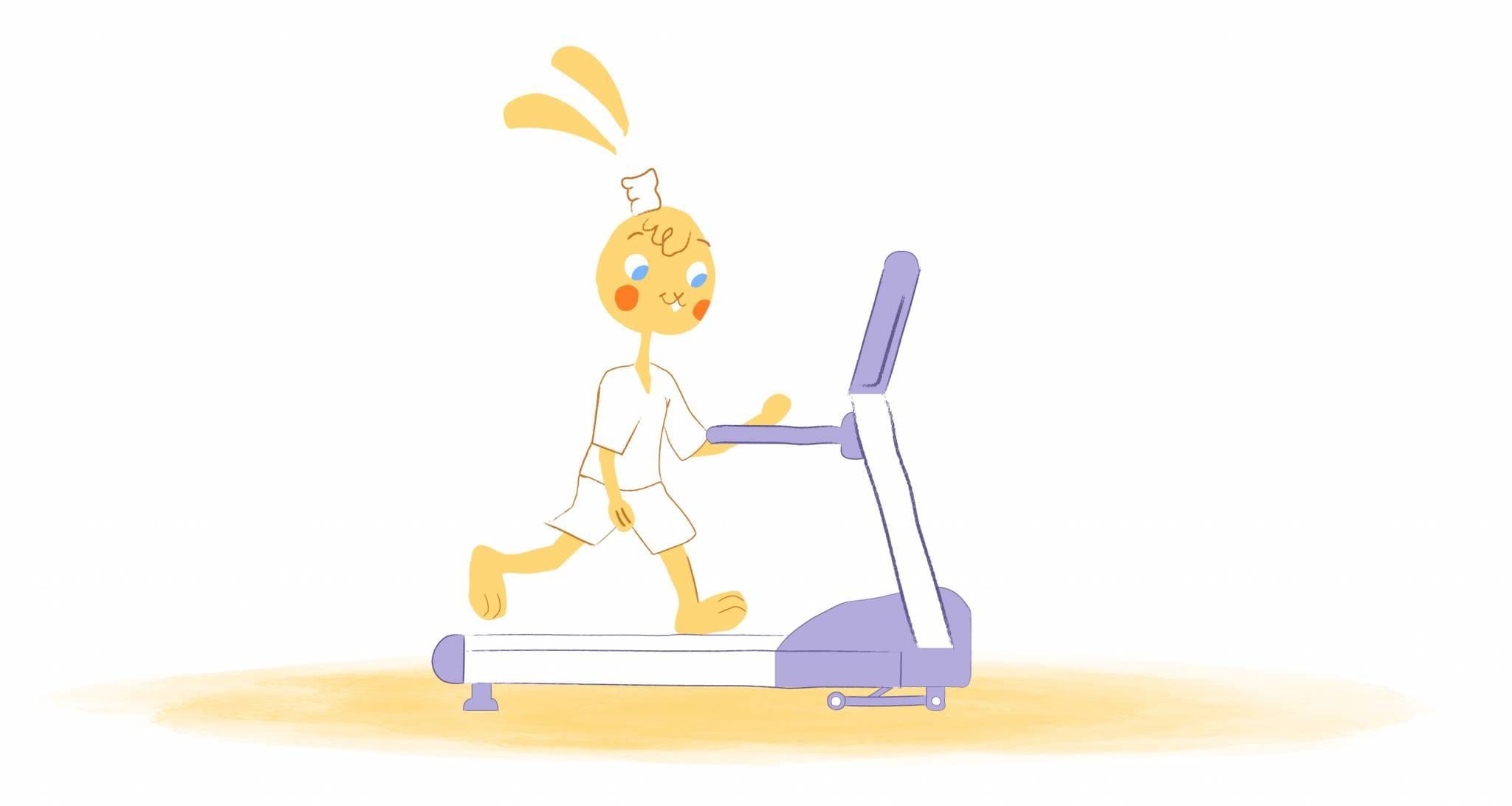

Do you feel like your days are crammed with too many commitments and obligations? Have you ever blurted out “I never have enough time.”
Well, you’re far from alone. The results of a OnePoll survey show that 60% of people do not have enough time for work, chores, and errands. In addition, with self-care, side hustles, and FOMO (fear of missing out), it’s no wonder we’re burned out. In fact, an astounding 89% of workers have experienced burnout within the past year.
What if you could slim down your schedule, shed the clutter, and reclaim some of your precious time? Well, it’s possible. Plus, you don’t have to cut corners or become a machine.
Interested? Of course you are. Here are 15 practical strategies for slimming down your schedule without further ado.
1. Understand your time thieves.
Before you start fiddling with your calendar, you need to know what you’re dealing with. In other words, analyze your current time commitments.
- Log your activities. Keep a detailed time log for at least one week. Keep track of everything you do, including work meetings, errands, social calls, and leisure activities. You must be honest, though! During this audit, you will discover your organization’s time hogs and hidden drains.
- Identify your values. What is truly important to you? Is it family, career, creative pursuits, or just having time to yourself? By understanding your values, you can prioritize activities that align with them.
- Recognize the “shoulds.” What are some things you do just because you feel you “should”? Get to the bottom of your commitments driven by guilt, obligations, or social pressure. Do you really benefit from them?
2. Prioritize with a laser focus.
Back then, my siblings and I had to do homework before watching cartoons because it was a “must-do.” Well, get back to that way of thinking regarding your schedule.
Find out what matters most to you, what is most important in your life, what is most important to you. After that, write them down so you can use them as a guide.
The next step is to compare your commitments with your priorities. Is that committee meeting in line with your passion for art? How does that late-night work email affect your family dinner dreams? It’s time to let go if these commitments aren’t really priorities.
In short, prioritize ruthlessly, keeping only meaningful activities.
3. Make sure your schedule is free from “fluff.”.
Whenever you perform tasks irrelevant to your day-to-day success, they are known as “fluff.” This refers to time-wasting activities that don’t contribute to your productivity.
What is the best way to get rid of fluff? Become comfortable saying “no” to tasks, recurring meetings, and other tasks that don’t add value to your schedule. Also, during the day, set limits on what you are willing to do. Be aware of when to say “yes” and when to say “no” as part of this process.
I understand that the things on your schedule right now probably seem important to you. However, I hope you will challenge this belief. You can begin by choosing one item from your to-do list … and then not doing it.
4. Master the art of saying “No, thank you..”
As a follow-up to the previous point, saying “no” is not selfish; it is strategic. The goal is to protect your precious time so you can dedicate it to what matters most.
If you’re having trouble with that, remember that practice makes perfect. So, you can start small. Politely decline a dinner party or an additional project, for example. Every “no” is a brick in your wall of priorities.
Also, you don’t need to explain a gentle “no.” It’s sufficient to say, “Thank you for thinking of me, but I am currently focusing on…” Eventually, you’ll see how quickly your schedule shrinks.
5. Learn how to batch and delegate like a productivity ninja.
I cannot emphasize this enough. It’s not possible to multitask. In reality, it’s a myth that lures you into a world of distracted attention.
Instead, batch similar tasks together. For instance, answer emails in a focused block and return calls during a designated time. By avoiding context switching, you can save precious mental energy.
Do not hesitate to delegate as well. Do you have a partner who can do the grocery shopping for you? Would a team member be able to handle that data analysis? Allow yourself to do the activities only you can do by delegating wisely.
6. Look for outsourcing opportunities.
It’s impossible to create more time. Help is available, however. In other words, you can declutter your schedule by letting someone else handle it.
In order to maximize benefits and minimize risks, it is essential to find the right outsourcing opportunities. Consider these tips: Consider these tips:
- Define your needs. Determine which tasks or projects you want to outsource.
- Assess your budget. Saving money shouldn’t be the only reason to outsource. In addition to quality, expertise, and potential long-term benefits, consider the overall value proposition.
- Weigh the pros and cons. There are times when outsourcing isn’t the best option. Determine whether it aligns with your business goals, communication needs, and level of control.
Cleaning your office or home, for instance, is something you might want to hire someone to do. Alternatively, you can hire a freelancer to handle your social media.
7. Embrace technology and tools wisely.
You can streamline tasks and improve organization by using:
- Tools for project management.
- Time management tools.
- AI text generators.
- Tools for recording and uploading videos.
- Social media management tools.
Through effective use of technology, manual effort can be reduced, time can be saved, and productivity can be improved. You can streamline your daily processes and minimize the time spent on them when you choose and integrate the right tools.
8. Control the technology monster.
At the same time, our attention is constantly fragmented by notifications, pings, and alerts. As such, set boundaries for your tech use by:
- Disable notifications for non-essential apps.
- Check your email and social media at specific times.
- Make time during the day (like mealtimes or evenings) to be tech-free.
9. Plan your perfect day.
Now that you’ve trimmed your schedule and set priorities, it’s time to plan a day that nourishes your spirit.
- Schedule intentional time. Whether you enjoy reading, exercising, spending time with loved ones, or pursuing a passion project, set aside time for these activities.
- Embrace white space. Give yourself room for spontaneity, for unexpected opportunities, and for simply being present. It is sometimes the unexpected experiences that enrich us the most. Allow yourself to be open to the possibility of “maybe.”
- Create routines. Maintaining a consistent routine for sleep, exercise, and other essential activities reduces stress and frees up your mind.
- Mind your boundaries. Carve out time for yourself and learn to disconnect from work. It’s important to give your mind and body space to recharge..
- Celebrate small wins. No matter how small your progress is, acknowledge it. Pat yourself on the back for each step you take toward reclaiming your time.
10. Cut down on meetings.
There’s a reason why people hate meetings. They’re the number one productivity killer. Therefore, depending on your role, here are some ways to reduce them:
- Be ruthless with scheduling. Meetings should only be scheduled if they are absolutely necessary. You might want to consider email threads, asynchronous updates, or short one-on-ones as alternatives.
- Set clear agendas and stick to them. Be sure everyone understands the meeting’s purpose and what preparations need to be made ahead of time. By doing this, things can remain focused and on track.
- Encourage active participation. Keep everyone engaged and avoid passive listening with tools like polls, breakout sessions, and collaborative documents.
- End early if possible. Do not feel obligated to drag out a discussion that wraps up earlier than expected. Be respectful of everyone’s time and end the meeting on time.
11. Understand how to say “Enough.”
Our days are often crammed with to-do lists and obligations because we overschedule ourselves. As such, don’t add more to your plate once it’s full. Recognize when it’s full and stop adding more.
Having said that, don’t be afraid to leave on time, skip an event if you’re exhausted, or even take a nap. Taking time to rest and rejuvenate will make you more productive and happier in the long run.
12. Spend time on what matters — you.
Do not let self-care and leisure slip through the cracks. Organize your schedule to make time for the things that nourish your soul.
Whether it’s reading a book, walking in nature, or spending time with loved ones, don’t skimp on these activities. In fact, add them to your calendar like you would an appointment with your doctor or client.
13. Unsubscribe from the “Comparison Game.”
It is important to realize that social media is not reality, but a highlight reel. Be careful not to compare your the challenges you face behind the scenes with someone else’s carefully curated online persona. Instead, keep your focus on yourself, celebrate your accomplishments, and be kind to yourself.
14. Having less stuff means having more time.
Of course, “less stuff = more time” is a simplification, and experiences will vary from person to person. Despite this, owning less can save you time in the following ways:
- Reduced maintenance. When you have fewer things, you don’t have to clean, organize, or repair as much. It will save you time dusting knick-knacks, folding clothes, and fixing gadgets.
- Decision fatigue minimized. You can devote more mental energy to more meaningful decisions when you have fewer choices surrounding what to wear, eat, and do. Reading, creating, or simply enjoying the present moment is more enjoyable when there is less time spent deliberating over what shirt to wear.
- Simplified routines. A minimalist approach often results in streamlined routines. Fewer plates means fewer dishes, fewer clothes means less laundry, and packing for a trip is a breeze with a capsule wardrobe. As a result, more time can be spent on more important things.
- Streamlined living. The less clutter in your living space, the more organized and spacious it will feel. By using this method, you can find lost items faster and prepare for guests faster, saving you precious minutes throughout the day.
- Increased focus. There is less visual distraction when a space is clutter-free, which makes it easier to concentrate. When it comes to work, study, or creative endeavors, this can be especially beneficial.
- Reduced stress. Being constantly reminded of possessions can contribute to anxiety and stress. As a result of owning less, you can experience improved mental well-being and be able to spend less time dealing with stress.
By adding this chore to your calendar, you will ensure that you regularly clean and declutter both your home and workspace.
15. Review and revise regularly.
Creating and updating your schedule isn’t just a one-time event; it’s an ongoing process based on your changing priorities and needs. Be sure to review your schedule regularly and make any necessary adjustments. Try new things and see what works best for you.
FAQs
How do I know if my schedule needs decluttering?
There are a number of signs that your schedule might need to be decluttered, including:
- A feeling of constant stress, overwhelm, or exhaustion.
- Not being able to focus on your tasks or feeling scattered.
- Due to overscheduling, you miss deadlines or commit to projects.
- You don’t have enough time for yourself, your loved ones, or the activities you enjoy.
- A constant feeling of running behind or never having enough time.
What are the benefits of decluttering my schedule?
The following are some of the benefits:
- Anxiety and stress are reduced.
- Productivity and focus are improved.
- A greater amount of time for relaxation and self-care.
- A better night’s sleep.
- Improved relationships.
- A greater sense of control over your time.
- There are more opportunities to be spontaneous and have fun.
How can I identify what to remove from my schedule?
Reviewing your current commitments is the best course of action. It involves reviewing your calendar, to-do lists, and any other scheduling tools you use. Particularly, identify tasks, events, or meetings that:
- Aren’t aligned with your priorities or goals?
- It is no longer of service to you.
- Feel draining or unsatisfying.
- It can be delegated or outsourced.
- For personal or professional development, they aren’t essential.
What are the best ways to say “no” without feeling guilty?
The following tips will help you say “no” gracefully:
- Don’t be afraid to be honest and direct about the reasons for your refusal.
- Consider alternative solutions or suggestions whenever possible.
- Thank the person for taking the time to understand your request.
- Respectfully communicate your boundaries.
- Keep in mind that it’s okay to prioritize your own well-being and needs.
How can I make sure I stick to my decluttered schedule?
Here are some tips for staying on track:
- Keeping track of your commitments is easier with a planner or calendar.
- Remind yourself of important tasks and deadlines.
- Establish routines and habits that support your schedule.
- Identify accountability partners or support groups.
- If you stick to your goals, reward yourself.
- Make adjustments as needed and be patient with yourself.
Image Credit: Jess Bailey Designs; Pexels











John Rampton
John’s goal in life is to make people’s lives much more productive. Upping productivity allows us to spend more time doing the things we enjoy most. John was recently recognized by Entrepreneur Magazine as being one of the top marketers in the World. John is co-founder and CEO of Calendar.